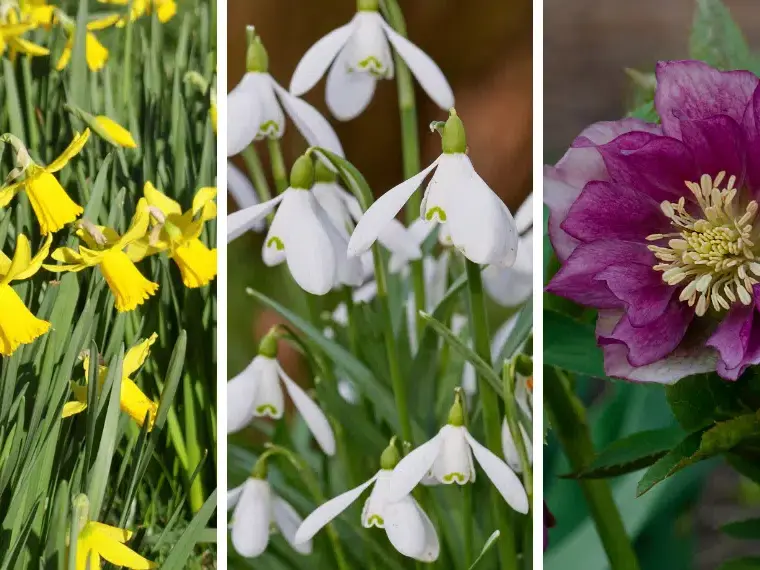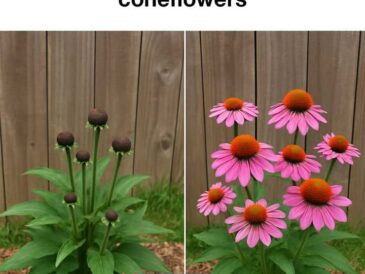As autumn’s vibrant colors fade and frosty nights creep in, many gardeners are tempted to hang up their gloves until spring.
But savvy green thumbs know that November is a prime month for planting perennials. While the days are shorter and cooler, the soil often retains enough warmth for roots to settle in before the deep cold of winter arrives.
Planting perennials in November offers numerous advantages. The cool temperatures reduce plant stress, rainfall is typically more reliable, and early planting gives your perennials a head start come spring.
Whether you’re dreaming of a lush flower bed, a pollinator paradise, or hardy foliage for year-round interest, November is your secret weapon for next year’s stunning garden.
Here’s a look at 10 exceptional perennials you should plant this November to enjoy robust growth and vibrant blooms in the seasons ahead.
1. Peonies (Paeonia spp.)
Peonies are the epitome of old-fashioned garden charm, producing lush, fragrant blooms in late spring and early summer. Planting peonies in November ensures they establish roots before the ground freezes.
Peonies thrive in full sun and well-draining soil. Once planted, they require minimal care and will return year after year with larger and more abundant blooms.
Plant bare-root peonies with the eyes (buds) just an inch or two below the soil surface.
Few perennials offer as much payoff for so little maintenance. A mature peony clump can live for decades, making it a treasured investment in any garden.
2. Hellebores (Helleborus spp.)
Hellebores, sometimes called Lenten Roses, are a must for anyone craving winter or early-spring color.
These evergreen perennials bloom when little else dares to show its face – from late winter into spring.
Plant hellebores in November to give them time to settle in and prepare for blooming. They prefer partial shade and rich, well-drained soil. Once established, hellebores are drought-tolerant and deer-resistant.
Their nodding, cup-shaped blooms come in shades of white, pink, purple, and even green. Beyond flowers, hellebores provide attractive foliage all year, offering texture and interest in shady spots.
3. Siberian Iris (Iris sibirica)
Siberian iris brings elegant vertical structure and delicate blooms to perennial borders. Unlike their bearded cousins, these irises feature slender, grass-like foliage and smaller, refined flowers.
November is ideal for planting divisions or bare-root rhizomes. Siberian iris thrives in full sun to part shade and moist, well-drained soil. Once established, they’re relatively drought-tolerant and low-maintenance.
In late spring to early summer, they produce stunning flowers in shades of purple, blue, white, or yellow. After flowering, their foliage remains neat, adding fine texture throughout the growing season.
4. Daylilies (Hemerocallis spp.)
Few perennials are as reliable and versatile as daylilies. These tough plants produce arching foliage and trumpet-shaped blooms in a dazzling array of colors, from pastels to vibrant reds and oranges.
Planting daylily roots or divisions in November allows them to settle in before winter. They tolerate various soil types and thrive in full sun, though they’ll also bloom in partial shade.
Daylilies are prized for their resilience. They shrug off heat, drought, pests, and diseases, making them perfect for beginners and busy gardeners alike. Some modern varieties rebloom, extending color through the summer.
5. Oriental Poppies (Papaver orientale)
Oriental poppies deliver a show-stopping splash of color with large, crepe-paper blooms in late spring to early summer. Planting them in November gives roots time to establish while the top growth remains dormant.
These perennials love full sun and well-drained soil. While their foliage often dies back after flowering, you can plant other perennials nearby to fill the space during midsummer.
Oriental poppies come in brilliant hues like scarlet, pink, white, and even coral. Their bold blooms attract pollinators and make excellent cut flowers.
6. Coneflowers (Echinacea spp.)
Coneflowers are garden classics known for their daisy-like blooms and prominent cone centers.
Planting coneflowers in November helps them establish strong root systems over winter, resulting in robust plants the following summer.
They prefer full sun and tolerate poor soil, heat, drought, and deer. Coneflowers bloom from mid-summer into fall and come in many colors, including traditional purple, pink, orange, yellow, and white.
Beyond beauty, coneflowers are beloved by pollinators, especially bees and butterflies. Their seed heads provide winter interest and food for birds.
7. Hostas (Hosta spp.)
Hostas are stars of the shade garden, prized for their bold foliage in shades of green, blue, yellow, and variegated patterns.
Though grown primarily for leaves, they also produce lovely spikes of lavender or white flowers in summer.
November is excellent for planting or dividing hostas. They prefer moist, rich, well-drained soil and partial to full shade.
Hostas come in a range of sizes, from tiny varieties perfect for borders to massive clumps for dramatic landscape features. Their foliage brings texture and color to shady spots all season long.
8. Bleeding Heart (Dicentra spectabilis)
Bleeding heart is a beloved classic that produces arching stems adorned with heart-shaped blooms in spring. These charming flowers add a romantic, woodland feel to gardens.
Plant bleeding heart roots in November so they can settle in and prepare for early spring growth. They prefer partial shade and moist, rich soil.
After flowering, bleeding heart foliage may go dormant, especially in hot summers, so pair them with late-emerging perennials to maintain garden fullness.
9. Lupines (Lupinus spp.)
Lupines are cottage garden staples with tall spires of densely packed flowers in shades of blue, purple, pink, yellow, and white.
Planting lupines in November helps them establish roots before bursting into bloom the following spring.
These perennials prefer full sun and well-draining soil. They’re perfect for adding vertical interest to beds and borders.
Besides their striking blooms, lupines improve soil health by fixing nitrogen, making them excellent companions in mixed plantings.
10. Coreopsis (Coreopsis spp.)
Coreopsis, also known as tickseed, is a sun-loving perennial that produces abundant, daisy-like flowers from early summer into fall. Planting coreopsis in November gives them a head start for blooming their first season.
These cheerful plants thrive in poor to average soil and tolerate drought once established. Coreopsis comes in bright yellows, oranges, reds, and bi-colored varieties.
Low-maintenance and long-blooming, coreopsis attracts pollinators and brightens garden beds with waves of color all season long.
Tips for Successful November Planting
While November is perfect for planting many perennials, a few guidelines will help ensure success:
- Plant on days when the soil isn’t frozen or overly soggy.
- Water thoroughly after planting to help roots settle in.
- Add mulch around new plantings to insulate roots and conserve moisture.
- Avoid fertilizing new plants in fall to prevent tender growth that could suffer frost damage.
By planting in November, you’re investing in a garden that wakes up vibrant and vigorous next spring.
You’ll save time, avoid the spring rush at garden centers, and give your plants a robust start.
Why Plant Perennials in November?
Planting perennials in November offers unique advantages that other seasons can’t match:
- Cooler weather reduces transplant stress.
- Soil is still warm enough for root development.
- Plants enter dormancy, focusing energy on establishing strong root systems.
- You’ll get blooms sooner in spring than if you wait until late winter or early spring.
Gardening in November also offers a peaceful, reflective time in the garden. With fewer chores demanding attention, you can plant at your own pace and dream of the seasons ahead.
While many gardeners associate spring with planting, November is a powerful secret weapon for creating a thriving garden next year.
By choosing the right perennials and taking advantage of the cooler season, you’ll enjoy a lush, colorful landscape that starts strong and performs beautifully.
Whether you’re planting bold blooms like peonies and oriental poppies or foliage favorites like hostas and hellebores, these perennials are sure to reward your November efforts with stunning displays for years to come.




